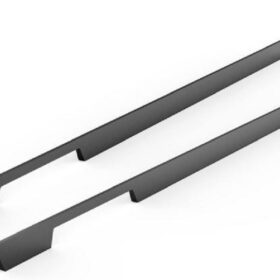Common Mistakes to Avoid When Installing Concealed Profile Handles
In the realm of home renovation, the allure of concealed profile handles has captivated design enthusiasts. These sleek and minimalist handles blend seamlessly into cabinetry, creating a modern and sophisticated aesthetic. However, venturing into the installation of concealed profile handles is not without its potential pitfalls. Navigating these common missteps will safeguard your project from frustration and ensure a flawless outcome.
1. Improper Handle Placement:
Accuracy is paramount when determining the placement of concealed profile handles. Meticulously measure and mark the locations to ensure handles align perfectly with cabinet doors and drawers. Failure to do so will result in misaligned handles that detract from the intended aesthetic.
2. Insufficient Screw Depth:
Securing concealed profile handles requires the precise depth of screws. Overtightening can damage the handle or the cabinetry, while undertightening can compromise its stability. Use the provided screws and a torque driver to ensure the handles are firmly secured without excessive force.
3. Oversized Routing Bit:
Carefully select a routing bit that matches the exact diameter of the concealed profile handle. An oversized bit will gouge the cabinet surface, while an undersized bit will leave gaps around the handle.
4. Inadequate Glue Application:
Concealed profile handles often require glue to supplement the screws. Apply glue sparingly and evenly to prevent excess squeeze-out that can interfere with the handle’s installation or the finish of the cabinetry.
5. Ignoring Different Handle Types:
Various types of concealed profile handles have different installation requirements. Familiarize yourself with the specific handling instructions for your handles to avoid incompatible routing or screw placements.
6. Misaligned Router Template:
If using a router template, ensure it is perfectly aligned before routing. Even slight misalignment can create uneven or mismatched handle slots. Verify the template’s placement with a level or square.
7. Damaged Cabinet Surfaces:
Exercise caution when routing or installing concealed profile handles to avoid damaging cabinet surfaces. Use sharp router bits and protective measures to minimize chipping or scratching.
8. Overlooking Finishing Touches:
After the handles are installed, inspect them thoroughly for any imperfections. Use a light sanding or polishing cloth to smooth out any rough edges or burrs. Attention to detail enhances the overall appearance and longevity of the handles.
By navigating these common pitfalls, you can confidently install concealed profile handles that seamlessly elevate the aesthetics of your home decor. Remember, precision, attention to detail, and proper preparation are the keys to a successful and satisfying installation.
-
2024-11-29Top Trends in Modern Kitchen Cabinet Pulls for 2024
-
2024-11-28The Ultimate Guide to Modern Kitchen Cabinet Pulls- Materials, Styles, and Tips
-
2024-11-27Elevate Your Kitchen Design with These Must-Have Modern Cabinet Pulls
-
2024-11-26Sleek and Stylish- The Best Modern Kitchen Cabinet Pulls for a Contemporary Look










